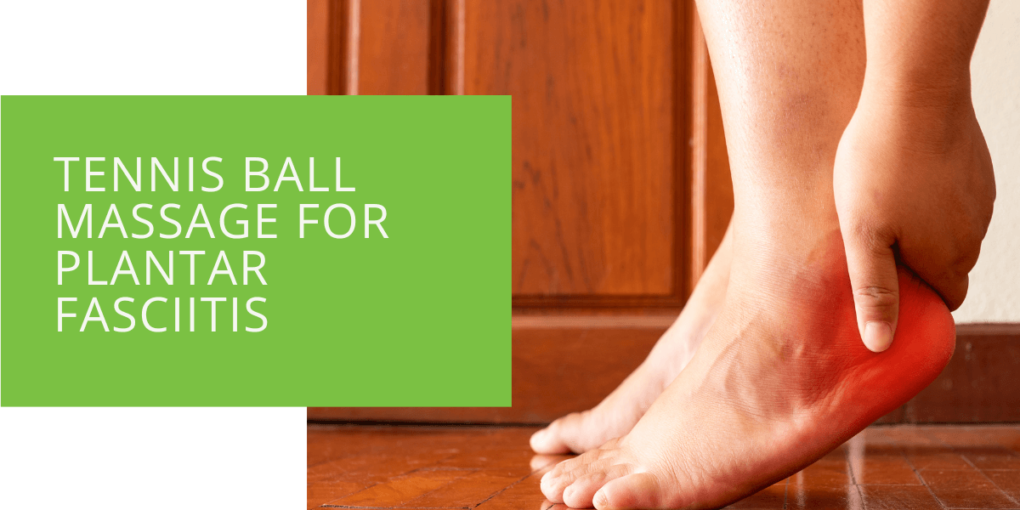Tennis Ball Massage for Plantar Fasciitis
Plantar fasciitis is one of the most common foot conditions, often causing excruciating heel pain and discomfort. If you've been grappling with this issue, you're not alone. Millions of people worldwide suffer from plantar fasciitis, but the good news is that there are effective ways to alleviate the pain. This comprehensive guide will explore how a simple tennis ball can substantially relieve plantar fasciitis.
Key Takeaways
- Using a tennis ball for self-massage can effectively relieve heel pain and alleviate tension in the foot arch for individuals suffering from plantar fasciitis.
- Regular and consistent tennis ball massages, proper footwear, and podiatrist consultation can help manage and prevent plantar fasciitis.
- Take action today to address plantar fasciitis, and schedule an appointment with our experienced podiatrists for personalized guidance and lasting pain relief.
Understanding Plantar Fasciitis
Before we dive into the tennis ball massage technique, let's take a moment to understand what plantar fasciitis is and why it can be so debilitating. The plantar fascia is a thick band of tissue that runs along the sole of your foot, connecting the heel bone to the toes. It plays a crucial role in supporting the foot arch and absorbing shock during activities like walking and running.
When the plantar fascia becomes inflamed or overstressed, it can lead to plantar fasciitis. This condition is characterized by pain and tenderness in the heel, especially during the first steps in the morning or after prolonged periods of inactivity. The affected foot may also experience pain along the arch and the ball of your foot.
The Benefits of Tennis Ball Massage
Now, let's delve into the therapeutic benefits of using a tennis ball to address plantar fasciitis:
Relieving Heel Pain
The tennis ball massage technique focuses on applying targeted pressure to the heel. You can help alleviate the pain and tension in this area by gently rolling the ball beneath your heel. This is particularly effective for individuals who experience severe heel pain due to plantar fasciitis.
Addressing the Arch of the Foot
The arch of the foot is another area where plantar fasciitis pain often manifests. The tennis ball massage can be adapted to target this specific region. Rolling the ball along the arch can help break down tension and promote relief.
Stimulating Blood Flow
Massaging the plantar fascia and the surrounding areas with a tennis ball can stimulate blood circulation. Improved blood flow helps heal by delivering essential nutrients and oxygen to the affected tissues.
Loosening Tendons and Muscles
Tight tendons and muscles in the foot often accompany plantar fasciitis. Using a tennis ball can help loosen these structures, providing relief and making it easier to perform stretching exercises.
Preparing for the Massage
Before you start your tennis ball massage session, preparing adequately is essential. Here are some tips to ensure a successful experience:
- Warm up your foot muscles by gently flexing and extending your toes.
- Select a tennis ball that's firm but not too hard. You want a ball that provides enough pressure without causing discomfort.
- Find a comfortable, flat surface to sit or stand on while performing the massage.

Tennis Ball Massage Technique
Now, let's get into the specifics of how to perform a tennis ball massage for plantar fasciitis relief:
Targeting the Heel
- Place the tennis ball under your affected foot in a chair or on the floor.
- Apply gradual pressure by gently rolling the ball back and forth beneath your heel.
- Focus on areas that feel particularly tense or painful.
- Perform this technique for 2-3 minutes or until you experience relief.
Focusing on the Arch of the Foot
- Move the tennis ball to the arch of your foot.
- Apply controlled pressure by rolling the ball along the length of your arch.
- Pay attention to any areas of increased tension.
- Continue for 2-3 minutes or until you feel the tension ease.
Tips for Effective Tennis Ball Massage
To maximize the effectiveness of your tennis ball massage for plantar fasciitis relief, consider these additional tips:
- Perform the massage regularly, ideally several times a day.
- Be consistent with your efforts; it may take time to experience significant relief.
- Combine the tennis ball massage with stretching exercises recommended by your podiatrist.
- Use supportive footwear and orthotic insoles to provide additional comfort and arch support.
Plantar Fasciitis Prevention
While a tennis ball massage can relieve plantar fasciitis, it's equally important to focus on prevention. Here are some steps you can take to reduce the risk of recurrence:
- Continue performing the tennis ball massage as part of your daily routine, even after the pain subsides.
- Wear appropriate footwear that provides adequate arch support and cushioning.
- Avoid prolonged periods of standing or walking on hard surfaces.
- Consult a podiatrist for a thorough evaluation and personalized recommendations.
Conclusion
In our journey to understand and combat plantar fasciitis, we've explored the incredible benefits of using a tennis ball for self-massage. This simple yet effective technique can help alleviate heel pain, address arch discomfort, and promote healing. We've also emphasized the importance of regular massage, proper footwear, and seeking professional guidance from a podiatrist.
If you're ready to take the next step in managing your plantar fasciitis and achieving lasting pain relief, we encourage you to schedule an appointment with our experienced podiatrists. We can create a personalized plan to ensure your feet stay healthy and pain-free.
Don't let plantar fasciitis control your life—take action today and reclaim the comfort and mobility you deserve!

